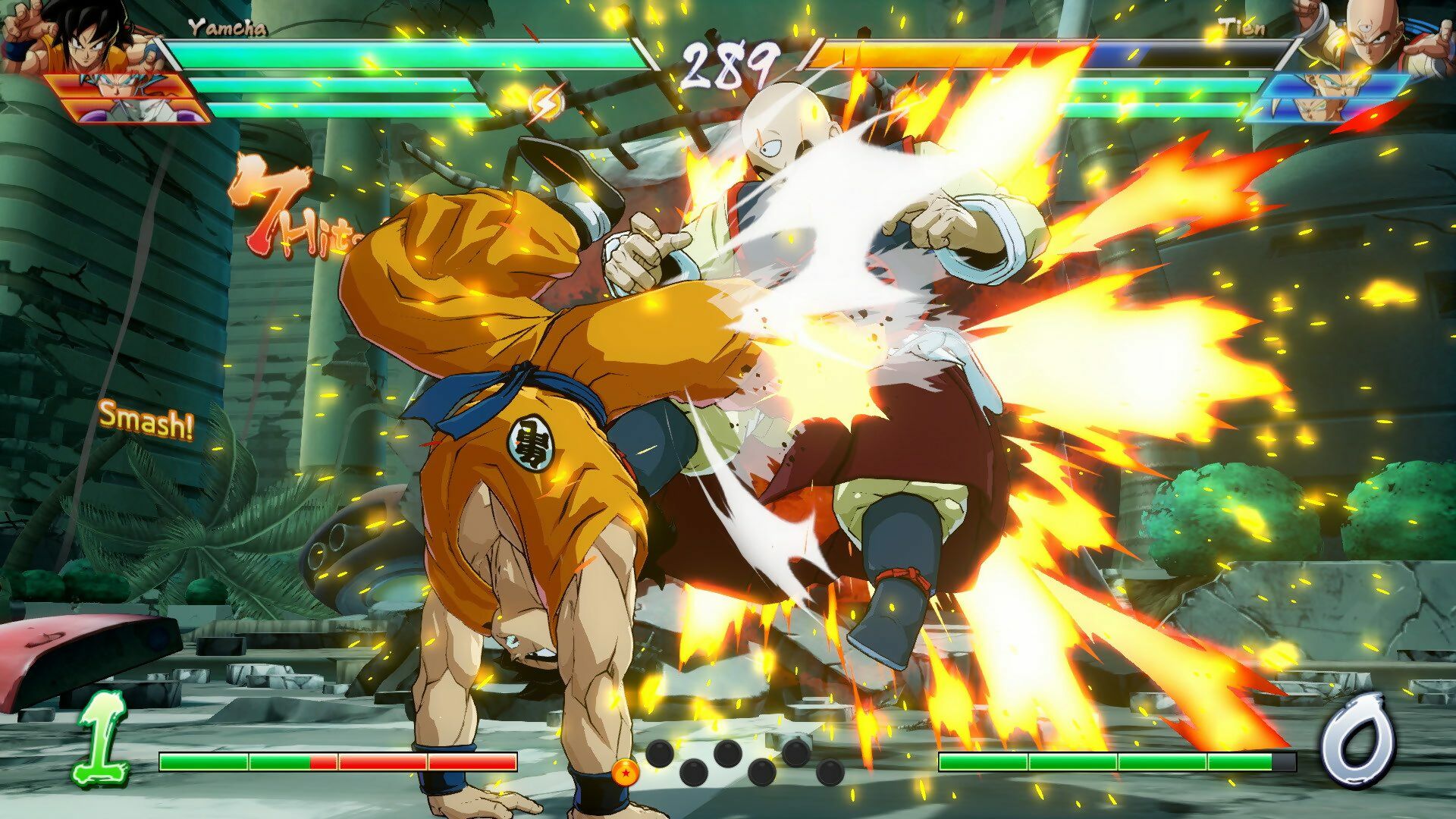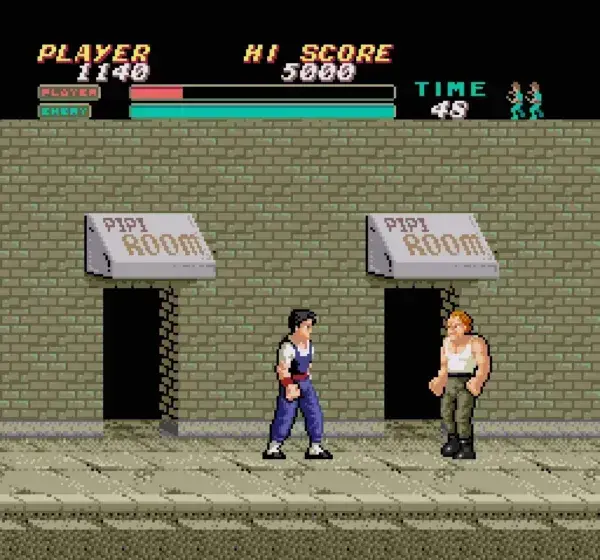
More than 30 years after Capcom released the original Street Fighter in 1987, the fighting game genre is undergoing something of a renaissance. We’re now seeing an ever-growing number of titles that make a point of being more accessible to new players: BlazBlue has included a beginner mode, and featured simplified controls, since 2009’s Continuum Shift.
Guilty Gear adopted a similar system in 2016’s Guilty Gear Xrd -Revelator; Street Fighter 5 featured more forgiving combos than earlier episodes of the series. Meanwhile, Soulcalibur VI and Dead or Alive 6 introduced new systems designed specifically for newcomers.
Inevitably, this move towards a more welcoming genre has its detractors. Street Fighter 5’s simpler combos have positive effects on beginners, but pro players have often expressed their distaste for these changes, and feel they restrict how players can express themselves.
“Developers have done all sorts of things, like lowering the execution barrier, adding comeback mechanics, and removing mechanics entirely,” says Gerald Lee, fighting game expert and owner of the YouTube channel, Core-A Gaming. “Sometimes [these changes] can improve the game, but sometimes they can kill creativity and depth.”
Creativity and expression are important words in fighting games: players express themselves through their actions, they lie to lure enemies into their traps, they get to know their opponents, and try to anticipate their next move. But newcomers are still learning the moves, so they can’t necessarily enjoy the nuances of this deceitful and complex dance. With this in mind, let’s meet the developers intent on making the fighting game more open, approachable, and accessible than ever before.
Move your joystick
Complex button sequences and joystick motions are the first barriers for beginners to overcome. Special moves executed with joystick inputs were first introduced in Street Fighter, giving players a selection of hidden, powerful attacks to discover by themselves.
Since then, joystick motions – or button sequences on gamepads – have become a common feature in fighting games. The moves themselves are no longer a secret – rather, they allow for a greater range of attacks with fewer buttons, and shape a character’s personality through their unique strengths and weaknesses.
Besides button sequences, though, fighting games feature rich mechanics that have multiplied and become increasingly baroque in more recent years. “I think it’s been a natural progression over time,” David Sirlin tells us.

Tutorials help to ease newcomers into Skullgirls’ action.
A former pro fighting game player, Sirlin was lead designer of Super Street Fighter II Turbo HD Remix, and now heads up Sirlin Games – an independent developer of both tabletop and video games – where he’s working on Fantasy Strike.
“Street Fighter II really created the fighting game scene, and since then, there’s been an overall trend towards more complicated fighting games,” Sirlin continues.
“As people got used to fighting games, they were ready for more mechanics, more complexity […]. The problem is that this trend also means fighting games have generally drifted out of reach of a lot of players. When the genre as a whole becomes more and more complex, even if it pleases expert players, it’s leaving a lot of people behind.”
Tutor me, senpai
Games like Lab Zero’s Skullgirls and French Bread’s Under Night In-Birth Exe:Late[st] have shown how detailed tutorials can help. “Before Skullgirls, fighting game tutorials consisted of, ‘Do this move three times; block three times; throw three times; great job!’ Lab Zero’s Mike Zaimont tells us.
“That crap doesn’t teach you how to play. So I set out to make a tutorial that would mimic the way I teach, with the goal of taking a completely new player from knowing nothing to being able to actually play, including all the aspects of that play. We didn’t just want to make easy-win, congratulatory sections; we wanted to teach things, and with that comes failure.”

Radiant Entertainment’s free-to-play Rising Thunder, now cancelled, replaced joystick motions with one-button moves and cooldowns.
Even so, these games still need weeks and months to be mastered at a decent level; at the end of its 179 tutorial lessons, Under Night In-Birth Exe:Late[st] warns that “You’re still not ready to take on other players.”
The new, accessible wave
Other designers, meanwhile, have begun to wonder what could be realised with fewer systems, simpler controls, and maybe no button sequences at all. Iron Galaxy Studios’ Divekick exemplifies this philosophy: players control its characters with only two buttons, which manage movements, regular attacks, and special moves.
Sirlin cites Divekick as an important inspiration for Fantasy Strike – a fighting game built to be accessible and understandable. “We started by having very, very few features, then adding more and more until the gameplay was deep enough to support tournament play and be interesting,” he explains.
Fantasy Strike has only one button for normal attacks, no crouch and no button sequences, while normal throws are automatically countered even if players let go of the controls. “[Fantasy Strike is] designed from the ground up to be as understandable as possible,” Sirlin continues. “That’s why we have discrete chunks for hit points, a super meter that fills automatically over time, highlights on the screen for armoured moves or invulnerable ones, a move list that fits on one screen, and so on.”

Divekick started out as a parody of the ubiquity of diving kicks in the fighting games scene.
Furthermore, Fantasy Strike’s lenient inputs have been designed to prioritise strategy over complex moves. “Making inputs do what the player intends, making it easy to understand how things work, and how to do combos has nothing to do with strategy; those are things that just get in the way of strategy until you can overcome them,” concludes Sirlin.
Since the launch of Fantasy Strike on Steam Early Access in 2017, other companies have released fighting games designed to be an effective introduction to the genre: Nicalis’ Blade Strangers is a crossover fighting game with four-button controls, easy combos, and no complicated button sequences, and SNK Heroines: Tag Team Frenzy is a fan-service heavy fighting game with no crouching and a dedicated button for blocking.
Heirs of Smash Bros.
At the same time, indie developers are building on the foundation of Nintendo’s Smash Bros. , a platform fighting series marked out by its unique balance as both an accessible couch game and an esport. “That’s what’s so great about [Smash Bros. ]: it’s still considered as a party game for some players, and as a highly competitive fighting game for others,” says Early Melon’s Jérémie Klemke, developer of PC platform fighter, Roof Rage.

Upcoming indie fighting game Metal Revolution promises ‘minimalistic controls’: special moves executed by pressing one dedicated button and a direction.
“One of the best parts about platform fighters is just how easy they are to understand for even entirely new players,” explains Bogdan Iliesiu from Angry Mob Games, developers of multiplatform title Brawlout. These indie platform fighters, inspired by Smash Bros. , draw in a wide range of people, Klemke adds. “Some of them are from the Smash community, others from traditional fighters, some are there because they like indie games [featuring] local multiplayer with friends,” he says.
True accessibility
A truly accessible fighting game isn’t accessible solely to beginners, however. Zachary Quarles – sound supervisor and audio director for 2013’s Killer Instinct – was also committed to making the game playable by blind and visually impaired people.
To reach this goal, he says, a fighting game needs “Very specific and crafted sound design for each character, a clean and precise audio mix with discernible positional audio that lets the player know where each character is on the screen, and what behaviours they’re currently performing.” He adds that “speech to text and text to speech” in menus is also key.
Skullgirls’ Zaimont thinks some of these adjustments are so easy to implement, it’s surprising they’re not more widely adopted by other developers. “Someone with impaired sight pointed me to Tolk, a screen-reader interface that is super-simple to add to your codebase and talks to most common screen reading applications. It’s simple to go find that code and insert a ‘send this to a screen’ reader function.”
“For me personally, I would love to have subtitles for any dialogues,” says deaf competitive player and accessibility advocate, Chris ‘Phoenix’ Robinson. And in addition to these features, Phoenix would like to see something that’s not often cited as an accessibility option: an online training mode. “[It] would be a very big help, especially in the [accessibility] or gaming disability community to learn [the] game together. Marvel vs. Capcom: Infinite had this.”
“I think the most important accessibility feature is button remapping,” says Randy ‘N0M4D’ Fitzgerald, a competitive player born with arthrogryposis, a rare muscle and joint disorder. “Fighting games these days have definitely got more complicated by adding moves that require multiple simultaneous button presses to execute a single move. I love the fact that games like Dead or Alive 6 address this.”
“One thing most fighting games share is the right stick is hardly ever used,” N0M4D says. “I think when Arc System Works released BlazBlue, they were beyond innovative by taking full advantage of the right stick. Each direction you pressed could execute a special move that would normally require a semi-complex combination of button presses.”

Messhof’s Nidhogg 2 doesn’t look like a fighting game, but it still teaches the basics of the genre.
“I think fighting games should allow you to map any possible button on a controller to any single button, macros, and possibly even custom macros,” agrees Dayton ‘Wheels’ Jones, a competitive fighting game player with a condition called spinal muscular atrophy type 2 (SMA II).
“Triggers, bumpers, thumbstick buttons, each direction of the right analogue stick, the help/option button, and the four face buttons give you a total of 15 possible slots which would be extremely helpful for the physically handicapped, including me.”
“Hardcore fighting game fans don’t like the idea of making options like these,” N0M4D acknowledges. “They think this takes away some of the skill fighting games require. However, my personal belief is the real skill in fighters comes down to timing and knowing the frame data.”
A common request is that developers work with the disabled gamer community, and listen to their needs. “Please start thinking about accessibility features early on in development; that would help your fighting games be more inclusive,” says Phoenix.
Accessible is inclusive
Finally, we shouldn’t forget that inclusivity can also make games more welcoming to a new and wider audience. “I believe a more diverse character roster would indeed draw more women and minorities,” says competitive player and cosplayer, Sedria ‘Infinitii’ Lewis. “People love seeing themselves in a character.”
In the meantime, fighting games are still widely targeted at male players – as shown by the blatant sexism in titles like Dead or Alive and SNK Heroines: Tag Team Frenzy.

Fantasy Strike: a fighting game “built from the ground up to be as understandable as possible.”
“Women’s representation in fighting games still needs some work, but it’s gotten a lot better,” Infinitii says. “Female characters’ clothing is starting to become more conservative and battle-suitable than before. Their bodies are also more realistic. Women’s role in story lore is also becoming more major.”
And even though games like Street Fighter still rely upon geographical and racial stereotypes to represent characters and places from around the globe, Infinitii explains that “Cultures aren’t greatly exaggerated as much as before. However, there are still signs of racial or skin tone inconsistencies, more specifically in characters of colour. Some characters that were originally dark become lighter in other game instalments or media, which can greatly tamper with representation.”
There are now more fighting games to choose from than ever. There are clearer tutorials, and a whole sub-genre – the platform fighter – designed to be played as a party game. More fighting games are now accessible to disabled gamers, and we’re seeing the genre become increasingly inclusive in its outlook. In short, if you’ve baulked at entering the intimidating world of fighting games so far, now is a great time to look for a fight.
“Personally, I felt motivated to go out and play Tekken in an offline setting when I noticed that other girls played this game too,” Tekken pro player Vanessa ‘Swagmaster’ Tran tells us. “I hope the fighting game community continues to grow, and welcomes all new players that find their way into the scene.”





